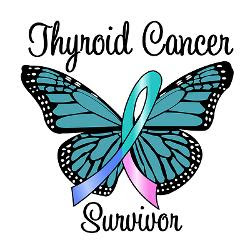The last post I wrote concentrated on knowing and learning what must be on a security (and all other) prescriptions. If you know what to look for, what must be filled and completed on the prescriptions, then you will save yourself time, energy, pain and actually make live easier for your pain specialist!
Now that you know what to look for on your prescriptions, let's concentrate on that 'chicken scratch' we call doctor's writing. What are all those little symbols, those strange, unknown signs that make up a prescription?
It is easiest to just go along the prescription, as it must be written, to help you learn how to read them.
First, is the name of the patient. Your birthdate, which can be filled in later at the pharmacy, no big deal. The Doctors information-- which is most likely pre-printed on the script. The date the prescription was written. And then the fun part......
Sig: Vicodin 10/325 mgs. PO Take 1 q 4*hrs. PRN #120 (NR)
Name of medication. Let's use Vicodin again.
Strength of medication. Here it is shown as 10/325. This means that you are prescribed 10 milligrams of Vicodin, or Hydrocodone, and 325 milligrams of Acetaminophen, or Tylenol. The TOP number is the Vicodin milligrams. The bottom number is the medication the Vicodin is mixed with, usually Tylenol, or some type of anti-inflammatory, such as Ibuprofen. Many people incorrectly state they are taking "Vicodin 500." They are actually taking 5 milligrams of Vicodin, and 500 milligrams of Acetaminophen written as Vicodin 5/500.
Route of medication. Written as PO (by mouth). I always remember this as 'Pass Orally'. (Have no idea at this moment if that is the root of this term, but it works for me.) You may also see: SL (Sub Lingual--under the tongue), TD (Trans-Dermal for patches.) Other routes, IM, SQ, IV, etc., is usually not used or seen on a direct patient's script. These would be orders that nurses work with. You will see PO on most of your prescriptions, as most medications are taken by mouth.
Directions of medication. The doctor is instructing you to take one every (q) four hours, (hours are usually written as a little symbol as you would use for the degrees of an oven temperature, the little circle up on the upper right side of the numbers.) On a script, we write the word every, always as a q, followed by the number of hours, then the 'degree mark'; which is right next to the number of hours. Other basic symbols used: o=Other, d=Day, i.e., qd=every day; qod=every other day.
What is PRN? If the doctor wants you to take the medication only when you NEED IT, you will see PRN written after the directions. If you need the Vicodin for pain, you take it every four hours. But this prescription is not one in which the doctor instructs you to take a medication every 4 hours, with no ability to only take it when you 'need' it. PRN meds are usually for pain medications, for the most part. Chronic pain patients may have PRN meds, as most must take medication round-the-clock to take care of the baseline pain, and any breakthrough pain meds may be written PRN, as patients have a medication to use only when they need it, or PRN, but still following the directions.
Quantity of medication. Here the patient is prescribed #120 pills. On security prescriptions, there is also a place to mark the number of pills prescribed.
Refills? Here the doctor has written NR, or No Refills. Most security prescriptions are not given refills.
Signature of Doctor.
**There may be written a separate date to FILL the medication at the bottom, if the patient is not to fill the med until written date. This may be in the instance of the doctor writing a script before the actual date to fill, and this would be noted at the bottom. It would be handwritten by the prescriber.
Learn how to 'decipher' the chicken scratch on your scripts, and understand exactly what they mean!!
Gentle Hugs.... and Stay strong ~just for today~
Thursday, November 10, 2011
Subscribe to:
Post Comments (Atom)


You left out that the doctor's DEA number has to be on the script. Not all prescriptions have it preprinted and many pharmacies wont fill the script if the DEA number is missing. The DEA number is the number that identifies the doctor with the DEA. Always check for the DEA number as well.
ReplyDeleteHey Missy dear!!
ReplyDeleteYes! That is so important. I basically included the DEA # in the "Doctor's Information" part. Their DEA numbers are normally pre-printed on the scripts, especially on security scripts. No pharmacy should fill anything without the DEA# printed on all scripts.
Thanks honey for that important item!!
Gentle Hugs----<3